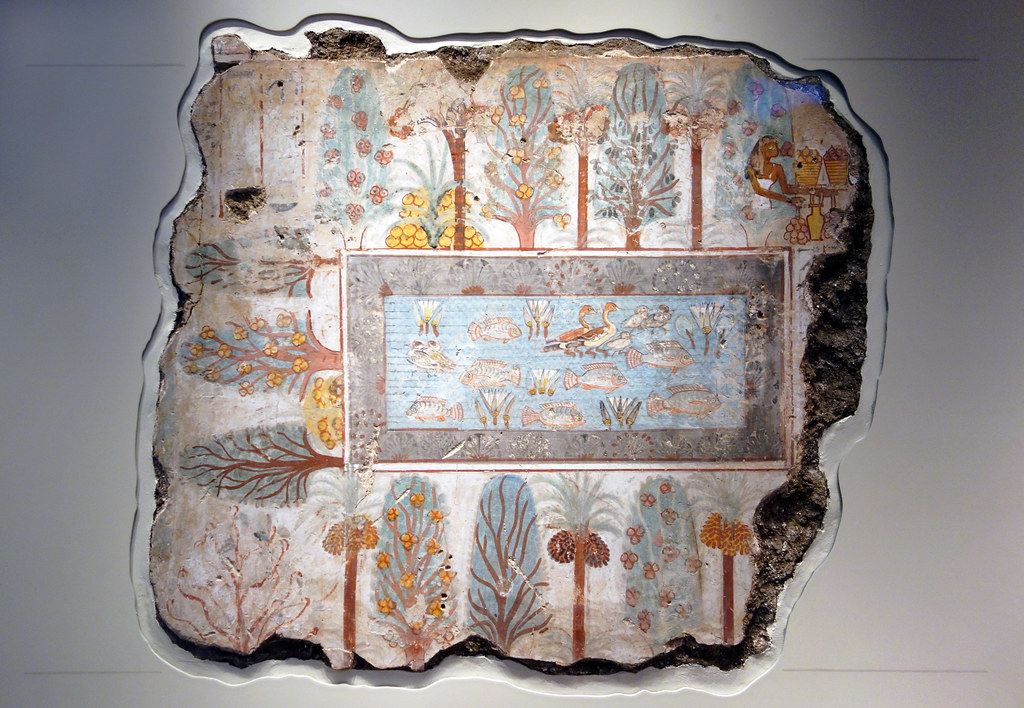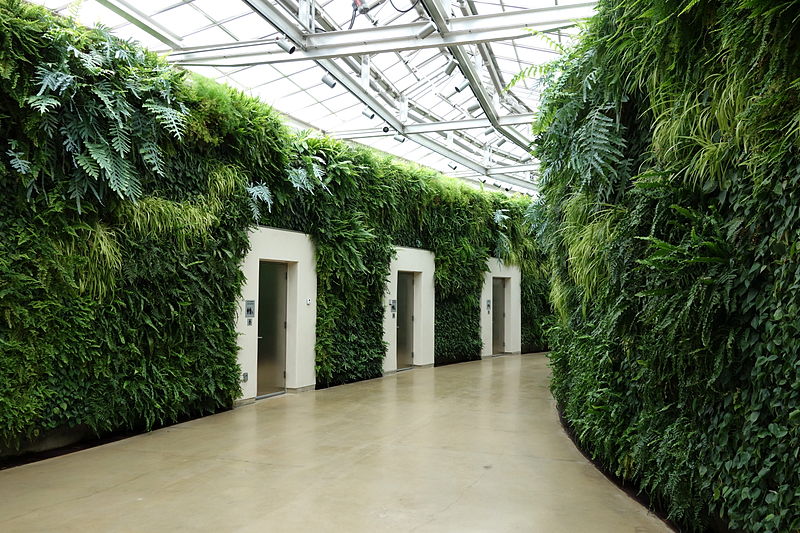1 Introduction to Interior Landscaping
Learning Objectives
- Describe the benefits of interior landscaping.
The domestication of wild plants for food crops about 10,000 years ago was a major factor in the development of human civilization. However, art and archaeological evidence from early civilizations in Egypt, China, Iran, Greece, and Rome reveal that plants were also selected and cultivated for ornamental purposes. Foliage and fruit plants in containers adorned the inner courtyards and rooftop gardens of homes, and flowers were cultivated in hothouses for bouquets and garlands. Figure 1.1 shows an example of a fresco tomb painting of the courtyard garden of a wealthy Egyptian homeowner.

From the 15th to the late 19th century, European world explorers collected many plants for ornamental interest and enjoyment by the wealthy. Exotic plants from the tropics that were cultivated indoors in northern regions became the forerunners of modern-day foliage, flower, fern, climber, and succulent house plants. By the mid 19th century, indoor gardening was a popular hobby of the wealthy and the emerging middle class. The impact of the Industrial Revolution on building lighting and heating increased the number of plants that could be grown indoors. Developments in building construction methods and heating and ventilation systems in the early to mid 20th century expanded the use of plants to beautify the indoor environments of offices, hospitals, public spaces, and private homes. In response, the horticultural production and hybridization of foliage and flowering plants increased and landscaping companies specialized in interior landscape design, installation, and maintenance services.
In addition to providing visual interest and softening the hard edges of structures with foliage texture, studies have shown that plants can improve indoor air quality. For example, during the energy crisis in the late 20th century, the construction of air tight buildings and use of synthetic materials were intended to reduce energy costs. However, toxic air pollutants such as trichloroethylene, benzene, and formaldehyde given off from paint, plywood, insulation, plastic, carpet and fabrics became concentrated in the air tight spaces and made inhabitants feel sick. The NASA Clean Air study demonstrated that indoor plants purified air by removing and trapping air pollutants in leaves, roots, and soil. Learn more about the study at Indoor Air-Wolverton Environmental [New Tab].
Human civilization has developed in conjunction with nature and the psychological and physical health benefits of integrating vegetation into our habitats is well recognized in the 21st century. Research suggests that for people who spend significant time indoors at work, the presence of plants can improve mood, contribute to contentment, and promote motivation and productivity. Read more about the benefits of indoor plants at this link to Houseplants: to support human health [New Tab].
The benefits of indoor plants have become part of the design of living and working environments in the 21st century. Interior landscapes or plantscapes have diversified the use of tropical foliage and flowering plants in atria and large conservatories, indoor and vertical gardens, potted office plants and hanging baskets, as well as color bowls, dish gardens, and terrariums. Figure 1.2 shows an example of interior landscaping using vertical gardens vegetated with tropical plants.


